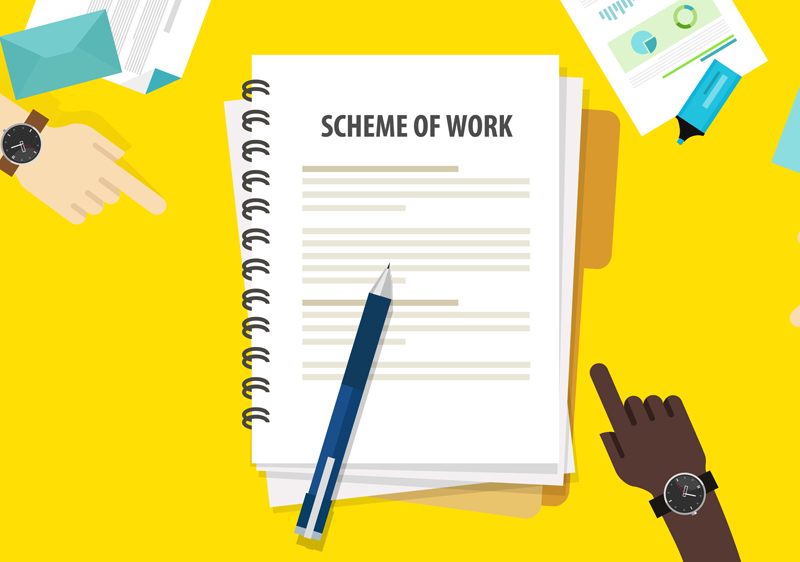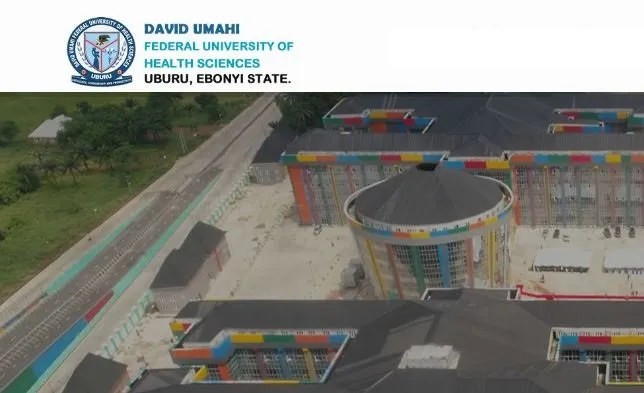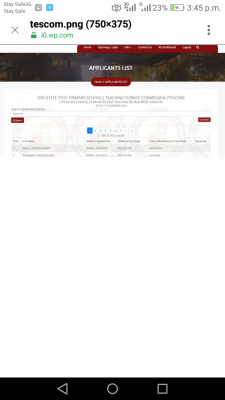
INTRODUCTION
Attention Deficit Hyperactive Disorder is a neurodevelopmental disorder, meaning it is due to how the brain and nervous system develops, it can be diagnosed in childhood and most times last into adulthood. ADHD can be diagnosed in early childhood from the ages of between four (4) seven (7), most adults with the disorder can be linked to their childhood where it was either noticed or ignored.
The causes of ADHD are not established concretely in research studies. Although it is linked to genetics, hereditary, or biological factors as well as environmental and social factors to a certain extent. Addressing ADHD in children is significant since early diagnosis and treatment of the condition during childhood can alleviate it. There are different types of attention deficit hyperactive disorder and they are as follows: INATENTIVE, HYPERACTIVE-IMPULSIVE TYPE, and COMBINED TYPE.
Inattentive ADHD was formerly known as ADD. People with inattentive ADHD make careless mistakes because they have difficulty sustaining attention, poor concentration on a situation or focusing on an object, they are easily distracted and have poor organizational skills. They move slowly and process information more slowly and less accurately than others. Inattentive ADHD may struggle with impulse control or hyperactivity at times. They often have difficulty maintaining attention on school, work, reading or fun activity. This type of ADHD is more often diagnosed in female than male.
People with HYPERACTIVE-IMPULSIVE ADHD are often characterized by impulsivity and hyperactivity. They fidget or feel restless, talk continually and can be known as a “chatterbox’, having difficulty sitting well, touch and play with every object and are constantly on the go, which can result in problems at school or work. Being physically still is a big challenge. This type of ADHD is more recognizable and more often diagnosed in children and men.
COMBINED TYPE ADHD mean an individual exhibits symptoms in inattentive and hyperactive-impulsive ADHD. According to National Institute of Mental Health most children have combined type ADHD. It is usually common in boys compared to girls.
ASSESSMENT OR DIAGNOSIS OF ADHD
Symptoms or behaviors that have persisted 6months in 2settings (e.g. home, school, church). Symptoms that have negatively impacted academic, social and \or occupational functioning. The diagnosis of ADHD, According to DSM-5 Diagnostic and statistical manual of mental health are as follows;
INATTENTIVE TYPE DSM-5 DIAGNOSIS SYMPTOMS
- Sidetracked by external or unimportant stimuli.
- Forgets daily activities.
- Diminished attention span.
- Displays poor listening skills.
- Loses and/or misplaces items needed to complete activities or tasks.
- Lacks ability to complete school work and other assessments or to follow instructions.
- Avoids or is disinclined to begin homework or activities requiring concentration.
Fails to focus on details and/or make thoughtless mistakes in schoolwork or assignments.
HYPERACTIVE-IMPULSIVE TYPE DSM-5 DIAGNOSIS SYMPTOMS
A) HYPERACTIVE SYMPTOMS
- Marked restlessness that is difficult to control.
- Lacks ability to play and engage in leisure activities in a quiet manner
- Incapable of staying seated in class.
- Overly talkative.
- Appears to be driven by a motor or is often on the go
- Squirms when seated or fidgets with feet/hands.
B) IMPULSIVE SYMPTOMS
- Interrupts or intrudes into conversations and activities of others.
- Difficulty waiting turn.
- Impulsively blurts out answers before questions completed.
COMBINED TYPE DSM-5 DIAGNOSIS SYMPTOMS
- Patient meets both inattentive and hyperactive/impulsive criteria for the past 6 months
Predominantly Inattentive Type:
- Patient should meet all inattentive criteria, but not hyperactive or impulsivity criteria, for the past 6 months.
Predominantly Hyperactive/Impulsive Type:
- Patient meets both hyperactive/impulse criterion, and not inattentive criterion, for the past 6 months
Note: Symptoms may be classified as mild, moderate, or severe depending on symptom severity Source.
TREATMENT AND MANAGEMENT OF ADHD
When a child is diagnosed with ADHD disorder, parents are often worried or concerned about if it can be treated or managed. Attention deficit hyperactive disorder can be managed with the right treatment and if detected early. There are many treatment options and what works best depends on the child and family, it is recommended that parents work closely with others involved in their child’s life-therapists, healthcare provider, care giver, teacher and other family members.
The APP (American Academy of Pediatrics) guidelines for diagnosis and evaluation of ADHD recommend that primary care providers complete these steps;
- Evaluate children and adolescents ages 4 to 18 years for ADHD if they are having academic or behavioral problems and show inattention, hyperactivity, or impulsivity.
- Get reports on the child’s symptoms from parents or guardians, school staff, and mental health workers involved with their care, and get information from the child or adolescent as well.
- Use rating scales and other sources to document the symptoms and ensure that DSM-5 criteria (stated above) have been met.
- Rule out any other possible conditions that can cause similar symptoms.
- Screen for other conditions that might coexist with ADHD, include emotional or behavioral disorder (such as anxiety, depression, and behavior problems), developmental disorders (such as learning and language disorders, autism spectrum disorders), and physical conditions (such as tics, sleep disorders or apnea)
- Refer children to a specialist if they detect co-occurring conditions that are not experienced in treating or diagnosing.
The treatment of ADHD usually needs psychological, behavioral, educational and medical intervention, this extensive approach to treatment is usually called “multimodal” and are subject to the age of the child. They include:
- Behavioral modification therapy
- Cognitive behavioral therapy
- Parent training and education programs
- Social skills training
- Medication
- ADHD diet
- Education as regards to ADHD
Adolescent and children with attention deficit hyperactive disorder are usually given the same multimodal treatment.
ADHD TREATMENT FOR CHILDREN AGES 4-6 YEARS
The family is a very important aspect of every child’s upbringing, therefore the first treatment of children (4-6years) with attention deficit/hyperactive disorder should include simple parent training in behavior management and/or classroom behavior involvement (if available)
Behavior modification therapy is an important treatment for attention-deficit hyperactivity disorder (ADHD) that can help improve a child’s behavior, self-control, and self-esteem. It is most effective in younger children when it is delivered by parents or guardian. It was recommend that healthcare providers refer parents of children below 12 years old for training in behavior management therapy. For children younger than 6 years old, parent training in behavior therapy should be tried before prescribing any ADHD medication.
When a child’s parent or guardian becomes trained in behavior management therapy, they learn new skills and strategies to help their young one with ADHD succeed at school, church, home, and in any relationship. Practicing and learning behavior therapy requires patience, time and efforts, but it has long lasting benefits for the child and the family.
Using simple parent training in behavior management?
Simple parent training can also be called BPT (Behavioral parent training) or PMT (parent management training). Simple parent training was first developed in 1960s by child psychologists.
Training in behavior management involves parents attending seven or more training sessions with a therapist. Sessions could involve working in groups with parents or with one family alone. The therapist would meet regularly with the parents to review their success, provide assistance or support, and probably adjust strategies, as needed, to ensure improvement in the child. Parents would be required to practice with their child in between sessions
Parents being the first agent of socialization have a great role or influence to play in improving their child’s behavior. Therapy that lays more emphasis on training parents is usually recommended for young children with attention deficit hyperactive disorder (ADHD) because young children are not old enough or matured to change their own behavior without their parents or guardians help. Some therapists most often use talk therapy or play therapy to treat young children with Attention deficit hyperactive disorder (ADHD). Play therapy gives the young child an opportunity to communicate their experience, thoughts or feelings through play, during play reinforcement can also be introduced; positive reinforcement if the child wins or does something good. Talk therapy makes use of verbal communication between the young child and a therapist to treat mental and emotional disorders.
Behavioral parent training is very essential because it can improve parents’ understanding and knowledge of behavioral strategies in different ways. Also it gives the parent or guardian an opportunity of understanding their child’s behavioral issues. They would also learn about the following;
- Causes and symptoms
- Available treatment and Assessment of ADHD
- Strategies for supporting young children at home, school and church
By understanding and having knowledge of what’s causing a child’s challenging behavior, parents or guardian can choose the best interventions to address the behavior. This usually involves identifying a child’s motivations for engaging in these behaviors, and then choosing the best intervention that meets the same need.
EDUCATION AS REGARDS ADHD
For people with Attention deficit hyperactive disorder (ADHD), education can be overwhelming and very challenging. Young ones with attention-deficit/hyperactivity disorder (ADHD) experience more challenges than the average student. The signs of ADHD, such as inability to concentrate or pay attention, difficulty staying in a particular place and difficulty controlling impulses, can make it difficult for children with attention deficit hyperactive disorder(ADHD) to perform well in school.
TO HELP CHILDREN WITH ADHD SCHOOLS SHOULD OFFER THE FOLOWING;
- ADHD treatments, such as behavioral classroom management or organizational training;
- Special education services; or
- Accommodations to lessen the effect of ADHD on their learning
INDIVIDUALIZED EDUCATION PROGRAMS (IEPS)
Students who need extra help or assistance in school are eligible for special education services in form of IEP (INDIVIDUALIZED EDUCATION PROGRAM). There are many reasons students could need IEP such conditions include;
- Attention Deficit Hyperactivity Disorder (ADHD)
- Learning problems
- autism spectrum disorder (ASD)
- speech or language impairment
- vision problems
- developmental delays
- hearing problems
IEP can be done in a regular school environment, it entails a reading teacher taking out time to help a small group of children with ADHD who need extra help while other children in the class work with the regular teacher. The small group helps young children with same needs who are brought together for help.
One major advantage of individualized education program is that efforts are put in place to assist kids learn alongside their peers or mates who do not have disabilities such as Attention Deficit Hyperactive (ADHD) or any other disorder. Most times the support needed can’t always be met in a general classroom arrangement, students with disabilities are educated in a special learning classroom or environment that is more appropriate for their needs. The classroom most often have fewer students which makes it easy for one on one communication between the students and the teacher or therapist, the student with disabilities also joins those in the other class during some activities- for example gym classes, lunch time, arts etc.
REFERRAL PROCESS OF IEP
The referral begins the moment a teacher, parents or guardian observes that a child might be having some challenges in classroom or is showing some signs and symptoms 0f ADHD DISORDER. The first step is to get specific information about the child’s general performance in school, this may be done through
- Parents-teachers conference
- Conference with the child or students
- The student watched in class with the aim of assessing his\her performance (attention, hyperactivity, communication, work completion, test, class work, homework etc.)
With the above information the school decides the best next action or step to take to help the child’s learning disability or other health impairment.
The professional on IEP (INDIVIDUALIZED EDUCATION PROGRAMS) evaluation team can include:
- Physical therapist
- Psychologists
- Speech therapist
- Special needs educator
- Classroom teachers
- Vision or hearing specialist
- And others depending the specific needs of the child.
Note: IEP can be complex but it can help a child with learning disabilities (ADHD).
TIP ON HOW TO MANAGE ADHD (ATTENTION DEFICIT HYPERACTIVE DISORDER AT HOME
There is no easy management of ADHD at home, school or church etc. The effectiveness of any treatment for ADHD requires hard work and consistency of such treatment. According to Edward M. Hallowell and Ratey the following are tips on how to manage ADHD at home;
- Knowledge of the disorder: parent or guardian should have knowledge of ADHD and be sure that the child has been evaluated for ADHD and its not based on assumptions.
- Have an ADHD consultant: Make sure you have someone who has knowledge and knows a lot about ADHD, and has seen or worked with people with such challenges. You should be able to consult with the person when there is an issue (psychologists, therapists, social worker, pediatrician etc.)
- Know your limits: Be open and always ask for assistance when you need it.
- Structure: Kids with ADHD needs their environment to give them externally what they can’t internally. Always make a to-do-list because they need reminders, repetition, and directions on what to do because most often they forget, paste it on the wall child’s door, refrigerator etc. lastly stop them from procrastinating
- Eye contact: frequent eye contact is necessary for kids with ADHD, always do it often because it helps a lot. A glance can bring an ADHD kid from day dreaming.
- Positive feedback: this is very necessary, when you notice a positive and encouraging performance always tell the child, encourage them as much as you can because it helps to improve their self-esteem.
- Breaking down tasks: Breaking down tasks is very essential because when it is cumbersome it gets them agitated or frustrated. Make it look small and always encourage them that they can complete it.
- Be free and playful: People with ADHD love new things so be free, loosen up and don’t be rigid. Incorporate play in whatever you do.
- Watch out for over stimulation: Always be observant as to know when to stop them from being hyperactive, once you do stop whatever activity that is triggering such.
- Improve memory: kids with ADHD often forget, it is said that they have an active working memory. Use tricks, games and the likes to improve their memory and also to help them concentrate.
- Write down what you’re going to say on a plain sheet before you say it: since kids with ADHD learn better with what they see than voicing it out, it would help then better if you have your ideas written down before saying it.
- Use feedbacks to assist the child in becoming self-observant: kids with tend to be poor self-aware or self –observers, they have no idea of their attitude or what is happening around them so its best you ask questions like,” Do you have an idea of what just took place? Or why did you think that little boy looked unhappy when you made that statement?” Questions that promote self-observation should always be encouraged.
- Always be explicit: With ADHD never assume anything.
- Reward and incentives: Reward and incentives helps people with ADHD practice good behavior because they know there would be a reward for behaving right.
- Give explicit and specific advice: Children with ADHD are seen as indifferent or selfish but the truth is that they have learnt how to interact or socialize. They are not born with such skills but it can be coached, taught or learnt.
- Responsibility: Responsibility like they say makes one responsible, give them the responsibility of asking you for things when they need it, it helps their memory in remembering thing they ought to do and when it needs to be done.
- Be sure to repeat, repeat, repeat: With ADHD sure to repeat things frequently but do it with love and understanding without making them feel bad.
- Exercise: One important treatment for ADHD is exercise in both children and adult. Exercise helps them to focus attention, take off excess energy and helps stimulates certain hormones needed for the body. Always endeavor to make the exercise interesting because it is a life time activity.
- Look out for sparkling moments: Children with ADHD are very talented and creative, always look out for that special moment where they bring out the best in them and make it fun or memorable.
ADHD DIET AND NUTRITION
There isn’t any clear scientific evidence that what you eat can cause ADHD, but research that there are certain food you take in that can play role in affecting or stimulating symptoms of ADHD. Remember to consult your doctor to be this food and diets does not interfere with your medicine.
ADHD diets has to do with the food you eat and nutritional supplements you take because they help the brain work better
ADHD is a neurodevelopmental disorder which has to do with the brain and experts say whatever is good for the brain is good for ADHD. You may want to eat:
- HIGH PROTEIN DIET-Cheese, beans, meat, eggs and nuts are rich in protein and may improve concentration.
- CARBOHYDRATES: They include vegetables, oranges, apples, tangerines, grape fruit, pears and kiwi you can eat they in the evening it may improve sleep.
- Omega-3 FATTY ACIDS: This can be found in white fish, salmon, brazil nuts olive and other foods with these in them. In addition you can take omega-3 fatty acid supplement.
Foods to avoid with ADHD
- Sugar
- Candy
- Honey
- White rice
- Products made from white flour
- Potatoes without skin
- Sodas and caffeine
- Cake mix( they usually contain high amount of sugar)
- Energy drinks especially in teens(it worsen the symptoms)
Finally ADHD can be treated using a combination of both therapy and medication. Get a professional to evaluate and diagnose if your child has ADHD because most times what looks like ADHD might be another condition. Always consult your doctor or specialist before using any of the medications, the 5 types of licensed drugs for ADHD treatments are as follows:
- Methylphenidate
- lisdexamfetamine
- dexamphetamine
- Atomoxetine
- guanfacine



